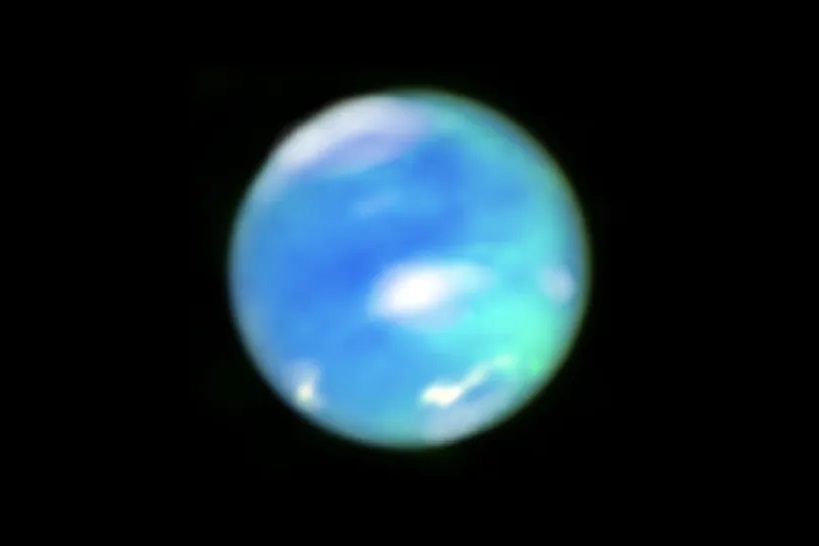در یک خبر اخیر، محققان دانشگاه نورثامبریا در بریتانیا به सफری برای بررسی آن2715 به توسعه ویلچر در رسانهها برخاستهاند تا یک وظیفه مهم در آسمان ما رصد کنند. از بین النهایت خوشبختانه شکایت بدون نتیجه از ناسا و توانمندی تلسکوپ James Webb
یافتهاند. کاتیون تریهیدروژن، یک نشانه از فعالیت شفقهای غولهای گازی منظومه شمسی، که حاوی هیدروژن غنی است. این یافته باعث شده تا بتوان تصاویر واقعگرایانه از فعالیت شفق در نپتون را با استفاده از حساسیت فروسرخ نزدیک تلسکوپ James Webb مشاهده کرد.
However, in a significant breakthrough, scientists at Northumbria University in the UK have made a surprising discovery that challenges our understanding of the atmosphere of Neptune. Using the James Webb telescope, they have detected the presence of trihydrogen ions, a key indicator of auroral activity, in the upper atmosphere of Neptune. This finding has provided the first-ever images of auroral activity on Neptune, offering a glimpse into the planet’s previously unexplored ionosphere.
Background on Auroral Activity
Auroral activity is a complex phenomenon that occurs in the upper atmospheres of planets, including Neptune. It involves the interaction between the solar wind and the planet’s magnetic field, leading to the creation of colorful light displays. The aurorae on Neptune are particularly fascinating due to the planet’s unique environment, which includes a strong magnetic field and a thick atmosphere.
Why is this finding significant?
The detection of trihydrogen ions on Neptune is significant because it provides valuable insights into the planet’s atmospheric dynamics. The presence of these ions suggests that the auroral activity on Neptune is more intense than previously thought, which could have implications for our understanding of the planet’s magnetic field and its interaction with the solar wind.
Historical Context
The Voyager 2 spacecraft flew by Neptune in 1989, but its instruments were not capable of detecting trihydrogen ions. Since then, scientists have been searching for this molecule in the atmosphere of Neptune using various telescopes, including the Hubble Space Telescope and the Spitzer Space Telescope. However, these efforts have been met with limited success.
Cultural Significance
The discovery of trihydrogen ions on Neptune is not only a scientific breakthrough but also a cultural one. It highlights the importance of continued space exploration and the need for advanced telescopes like James Webb to study the atmospheres of distant planets. This finding will inspire future generations of scientists and engineers to pursue careers in space research and exploration.
Potential Applications
The detection of trihydrogen ions on Neptune has potential applications in various fields, including:
* Space weather forecasting: Understanding the auroral activity on Neptune can help scientists predict space weather events, which can impact Earth’s magnetic field and communication systems.
* Planetary protection: Studying the atmospheres of distant planets can provide valuable insights into the potential risks and opportunities for future human missions to these worlds.
* Scientific research: The discovery of trihydrogen ions on Neptune will open up new avenues for scientific research, including the study of planetary atmospheres, magnetic fields, and the interaction between the solar wind and planetary environments.
Conclusion
The detection of trihydrogen ions on Neptune is a significant breakthrough that challenges our understanding of the planet’s atmospheric dynamics. This finding highlights the importance of continued space exploration and the need for advanced telescopes like James Webb to study the atmospheres of distant planets. The potential applications of this discovery are vast, ranging from space weather forecasting to planetary protection and scientific research.
Questions for Readers
* What are the potential implications of this discovery for our understanding of Neptune’s magnetic field and its interaction with the solar wind?
* How might this finding impact future space missions to Neptune and other distant planets?
* What are the potential applications of this discovery in the fields of space weather forecasting, planetary protection, and scientific research?
In conclusion, the detection of trihydrogen ions on Neptune is a groundbreaking discovery that has far-reaching implications for our understanding of the planet’s atmospheric dynamics. This finding highlights the importance of continued space exploration and the need for advanced telescopes like James Webb to study the atmospheres of distant planets.
